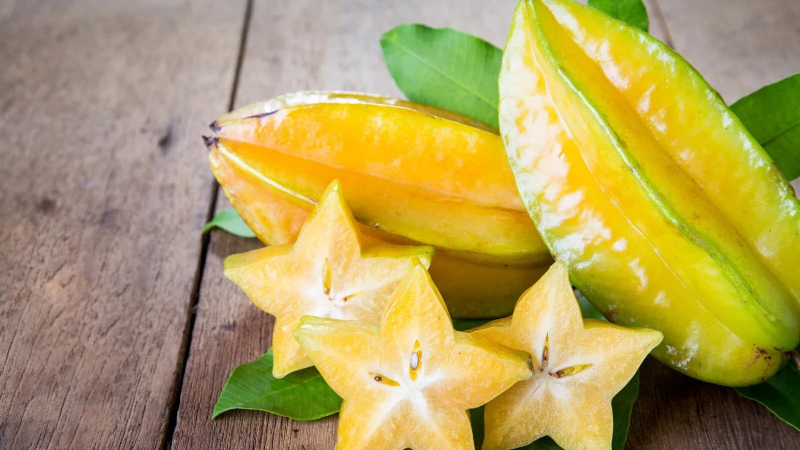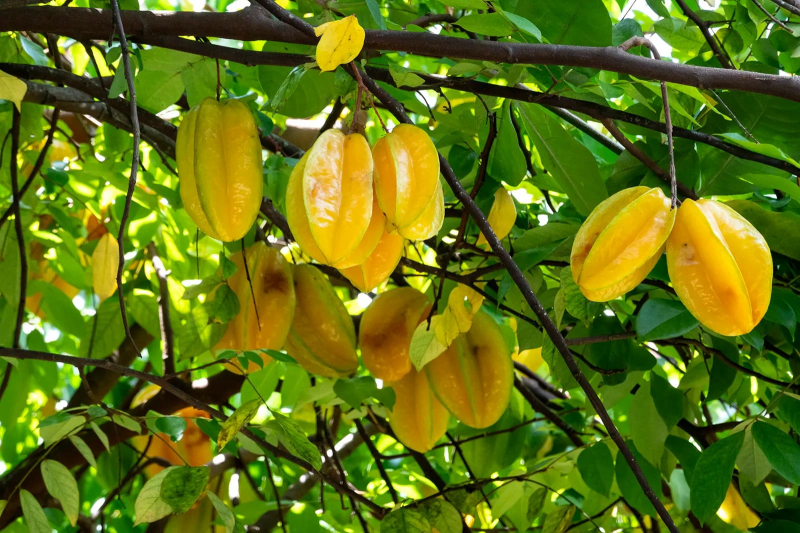Star Fruit
Carambola, also known as star fruit, is the fruit of Averrhoa carambola, a species of tree native to tropical Southeast Asia. The mildly poisonous fruit is commonly consumed in parts of Brazil, Southeast Asia, South Asia, the South Pacific, Micronesia, parts of East Asia, the United States, and the Caribbean and contains the neurotoxin caramboxin. The tree is cultivated throughout tropical areas of the world.
When ripe, the spectacular fruits have an orange-yellow exterior, crisp, juice-filled yellow flesh, and a thin, waxy pericarp. The fruit has an oval form and measures 5 to 15 cm in length. There are typically five or six noticeable longitudinal ridges. It has a star-like cross-section. The flesh is transparent and varies in hue from pale yellow to yellow. Each fruit may contain 10 to 12 flat, light brown seeds that are covered in a gelatinous aril and measure 5 to 15 mm in width. Raw carambola is 91% water, 7% carbohydrates, 1% protein, and has negligible fat (table). A 100-gram reference amount of raw fruit supplies 128 kilojoules (31 kilocalories) of food energy and rich content of vitamin C (41% of the Daily Value).












